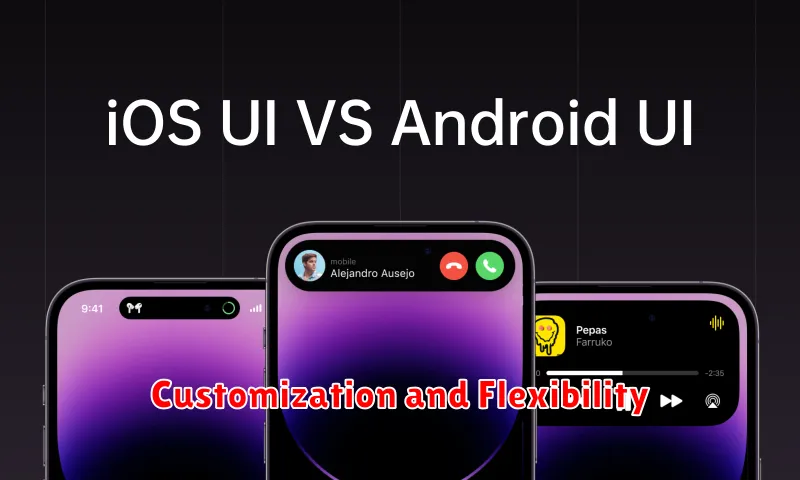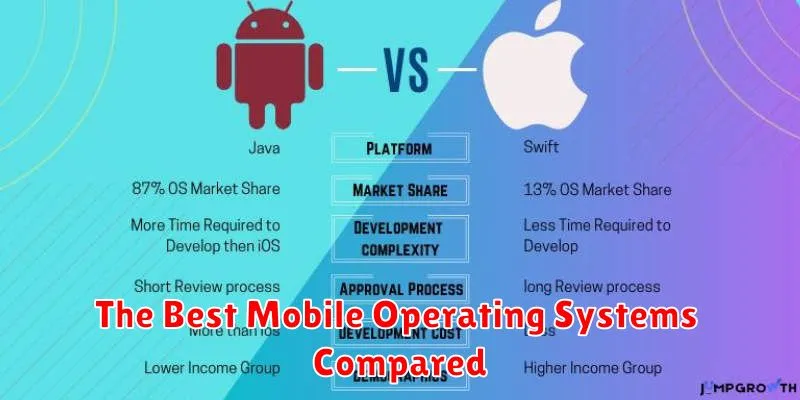Choosing the best mobile operating system can be a daunting task. With so many options available, how do you determine which platform is right for you? This article compares the leading mobile operating systems, highlighting their key features, advantages, and disadvantages to help you make an informed decision. We’ll delve into the strengths and weaknesses of each mobile OS, considering factors like performance, security, app availability, and user experience. Whether you’re a tech-savvy user or a casual smartphone owner, understanding the nuances of each operating system is crucial for maximizing your mobile experience.
From the ubiquitous Android to the streamlined iOS and the emerging contenders, this comparison will equip you with the knowledge to choose the best operating system for your needs. We’ll explore the core functionalities of each platform, examine their respective app ecosystems, and analyze their approaches to privacy and data security. By the end of this article, you’ll have a clearer understanding of the mobile OS landscape and be well-prepared to select the perfect operating system for your next smartphone or tablet.
Android vs iOS: Key Differences
Choosing between Android and iOS depends largely on individual preferences and priorities. Openness is a key differentiator. Android is open-source, allowing for extensive customization and flexibility. iOS, on the other hand, is a closed system, offering a more curated and controlled experience.
Another important distinction lies in app ecosystems. While both offer a vast selection of apps, there can be differences in app availability and pricing. Hardware choices also vary significantly. Android is available on a wide range of devices from numerous manufacturers, while iOS is exclusive to Apple products.
Customization and Flexibility

Mobile operating systems differ significantly in their approaches to customization and flexibility. Android is renowned for its open-source nature, allowing extensive user customization, from widgets and launchers to system-level modifications. This offers a high degree of flexibility for users who prefer to tailor their devices to their specific needs.
iOS, while offering less system-level customization, provides a curated and streamlined user experience. Users can personalize their home screens with app icons and widgets, and utilize features like Focus Modes to customize notifications and app availability based on different contexts.
Security and Privacy Features
Mobile operating systems prioritize user security and privacy through various features. Biometric authentication, such as fingerprint and facial recognition, provides a secure way to unlock devices and authorize transactions. Data encryption protects sensitive information stored on the device from unauthorized access. Permission controls allow users to manage which apps have access to specific data, such as location, contacts, and camera.
Secure boot processes ensure the integrity of the operating system during startup, preventing malware from loading. Regular security updates patch vulnerabilities and protect against emerging threats. Privacy dashboards provide users with transparency and control over their data, allowing them to view and manage app permissions and data access.
App Ecosystem and Store Quality
A crucial aspect of any mobile operating system is its app ecosystem. The availability of high-quality apps significantly impacts user experience. App store quality refers to the security, curation, and overall reliability of the platform distributing these apps.
Factors to consider include the number of available apps, the prevalence of malware or low-quality apps, and the update frequency of existing apps. A robust app ecosystem provides users with a diverse range of choices and ensures a secure and reliable experience.
Different operating systems have varying approaches to app store curation. Some prioritize a more open approach, while others maintain stricter control, resulting in trade-offs between app availability and security.
Update Frequency and Longevity
A key aspect of any mobile operating system is its update frequency and the length of time it receives support. Frequent updates are crucial for delivering new features, performance improvements, and vital security patches. Longevity, the period a device continues to receive updates, ensures ongoing security and access to the latest software.
Different operating systems have varying update policies. Some prioritize rapid updates with new versions rolling out regularly, while others focus on stability with less frequent, but potentially larger, updates. The supported lifespan of a device also differs across operating systems, with some offering longer-term support than others. Considering both update frequency and longevity is essential when choosing a mobile device, as it impacts both the user experience and long-term value.
Performance and Battery Optimization
Performance and battery life are crucial factors when choosing a mobile operating system. A smooth, responsive experience is essential for modern smartphone usage.
Operating systems employ various techniques to optimize performance, including efficient memory management, background process control, and hardware acceleration. These optimizations aim to minimize lag, reduce app load times, and enhance overall responsiveness.
Battery optimization strategies focus on minimizing power consumption without significantly impacting performance. Techniques include adaptive brightness, power-saving modes, and background app restrictions. The effectiveness of these optimizations varies across operating systems and hardware configurations.
Device Compatibility and Ecosystem
Device compatibility plays a crucial role when choosing a mobile operating system. Consider which brands and models support each OS. iOS, for example, runs exclusively on Apple devices, offering a tightly controlled ecosystem. Android, conversely, supports a wider range of devices from various manufacturers, resulting in more hardware choices but potentially fragmented software experiences.
The ecosystem surrounding an OS is equally important. Think about app availability, accessory compatibility, and integration with other devices. A robust ecosystem offers a seamless experience across multiple platforms and services.

